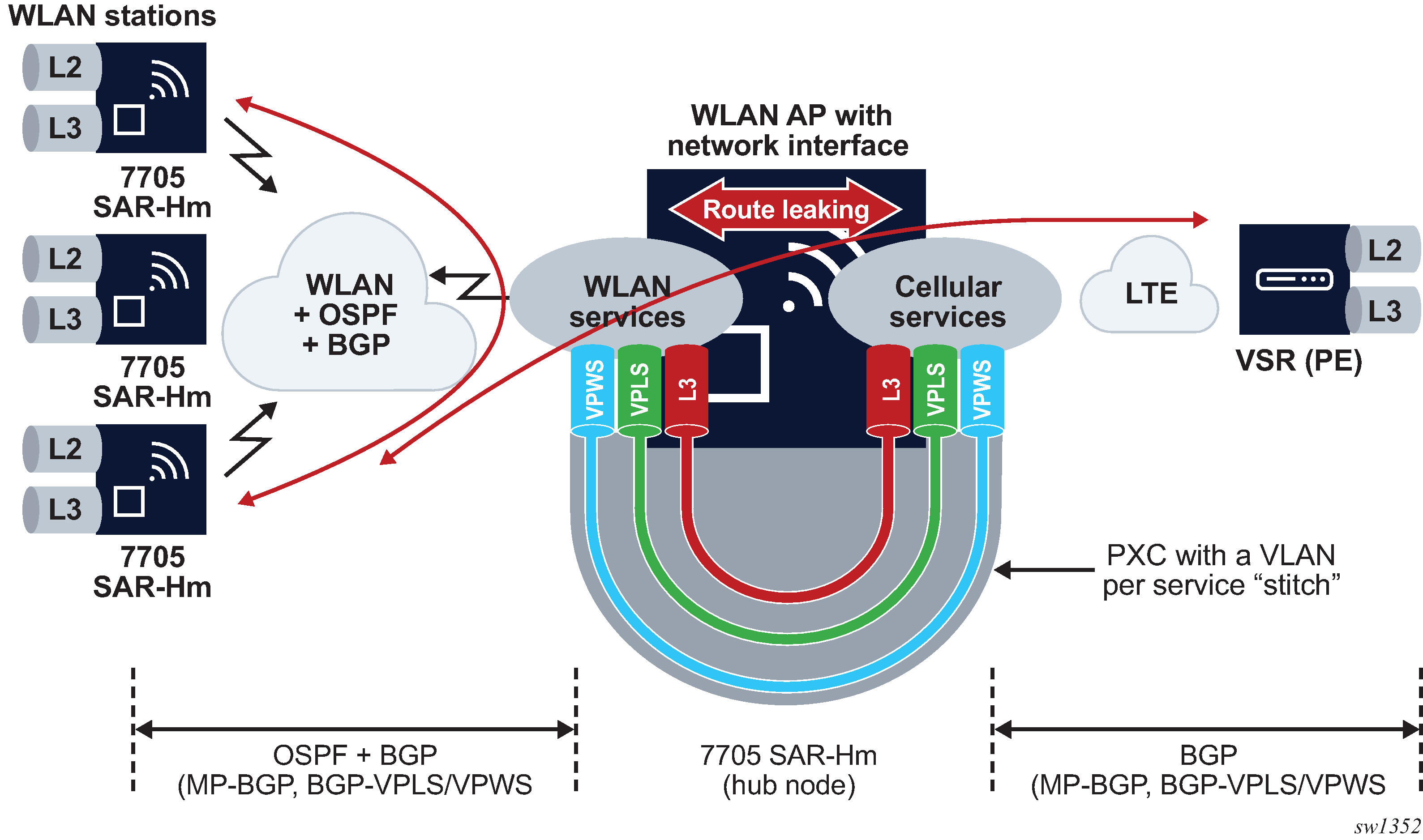Stitching services between the cellular interface and a WLAN AP
When extending IP/MPLS services over WLAN from the cellular interface, services can be stitched together from the cellular interface to the WLAN AP interface. Service stitching allows operators to create a hub-and-spoke topology from the stitching node to other WLAN stations over the WLAN AP using the same WLAN network.
Stitching services from a cellular interface to a WLAN AP is an example of stitching services from a cellular interface to the WLAN AP.

With a hub-and-spoke WLAN topology, Layer 2 or Layer 3 services can be established between the WLAN stations over the same WLAN network. An OSPF and BGP control plane is configured over the WLAN network from each station to the AP, so that each WLAN station learns routing information from the other stations or from the WLAN AP. The control plane also distributes routing information learned from the cellular interface allowing WLAN stations to learn routes to PE nodes reachable over the cellular interface.
When services from a station need to reach a destination over the cellular interface, the services must terminate on the PXC port of the hub 7705 SAR-Hm. The other end of the PXC port then re-originates the traffic over a dedicated service over the cellular interface toward other PEs reachable over the cellular interface.
For Layer 3 VPRN services, routes need to be leaked from the WLAN-side VPRN to the cellular-side VPRN. For VPLS, MAC addresses are learned across the PXC port as needed and re-advertised in BGP-VPLS. For VPWS, the stitch is achieved by extending the Epipe service from WLAN to over cellular.